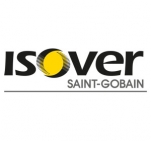Environmental Product Declaration: ISOVER Creates a New Trend for the Insulation Market to Drive Green Building

Russian current environmental legislation obliges the manufacturer to disclose the contents of the product; however it is very often unclear how the material affects the environment. For instance, in Europe they have estimated that ISOVER insulation saves up 300 times more energy during operation than during production and disposal. To do this they have collected data on the use of non-renewable resources, the consumption of energy and water, the packaging type and the quantity of industrial waste. On top of that they have taken into account the analysis of environmental, quality and performance characteristics of ISOVER thermal insulation, as well as the transportation and disposal means.
The quantitative indicators of the overall impact of ISOVER thermal and acoustic insulation on the environment during the entire life cycle of the product can be found in the Environmental Product Declaration (EPD). While creating a new trend for the Russian market of mineral wool insulation ISOVER is the first in this area to introduce calculations on the materials that are manufactured in Russia and to present the results by publishing the EPD in accordance with EN 15804 and ISO 14025 international standards.
«For the professional market EPD have practical value. The availability of the Environmental Product Declaration makes it possible to use ISOVER insulation to construct buildings that obtain LEED, BREEAM and DGNB green certification and to get extra points,» – says Alexander Shabaldin, Head of ISOVER Energy Efficiency Department. The introduction of the EPD results to the consumers provides more information to select the materials that have a minimal impact on the environment. In the long term this will lead to the transformation of the market, and it will be an additional factor for the promotion of green building and improvement of the quality of life.
Full content of this issue you can read here
The full version of the article can be read in our printed issue, also you can subscribe to the web-version of the magazine
 Materials provided by Saint-Gobain
Materials provided by Saint-Gobain


